
views
X
Trustworthy Source
Mayo Clinic
Educational website from one of the world's leading hospitals
Go to source
This usually happens in people with kidney problems, and could cause nausea, fatigue, an erratic heartbeat, breathing problems, and chest pain. If you experience these symptoms, seek medical attention right away. If you do have hyperkalemia, then your doctor will probably put you on a low-potassium diet to bring your levels back to normal. For more serious cases, they may try medication as well. With the right care, you can recover from this condition and get on with your life.
Designing a Low-Potassium Diet
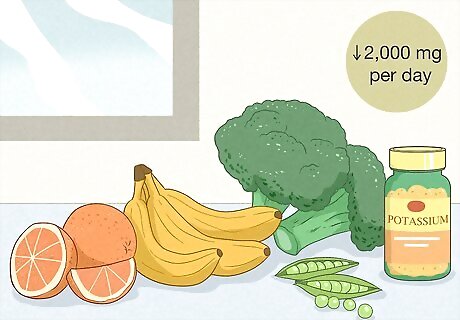
Consume less than 2,000 mg of potassium per day. While the average person consumes about 3,500-4,500 mg of potassium per day, this is way too much for someone with hyperkalemia. If you’re on a low-potassium diet, then consume no more than 2,000 mg per day so normalize your levels. Keep track of your diet and stay within this range. Your doctor or dietitian may suggest a different daily level. If so, follow their instructions.
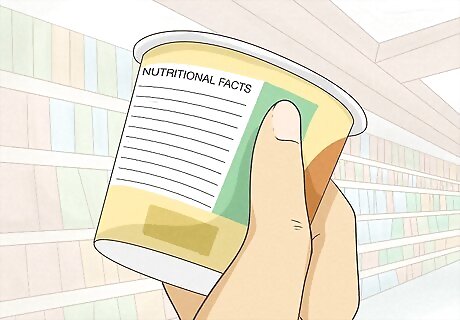
Check nutrition labels on all the packaged food you buy. All prepared or packaged food should have a nutrition label breaking down its nutrients. Check this label to calculate the amount of potassium you’re eating each day. If you buy fresh foods or a product doesn’t have a nutrition label, look up the potassium content online or on a nutrition app. Pay attention to the serving sizes when you check the nutrition facts. You might assume that a whole package is 1 serving, but in most cases a package contains several servings.

Eat foods that have less than 150 mg of potassium per serving. Foods with less than 150 mg of potassium are considered low-potassium, so base your diet around these foods. You can eat most of these foods without worrying about going over your daily limit, but still pay attention to serving sizes so you don’t accidentally eat too much. Fruits and vegetables low in potassium include berries, apples, peaches, pears, pineapple, squash, rhubarb, radishes, peppers, onions, lettuce, eggplant, celery, cabbage, beans, and cauliflower. Bread, cereal, lean meats, pasta, and rice are also low in potassium.
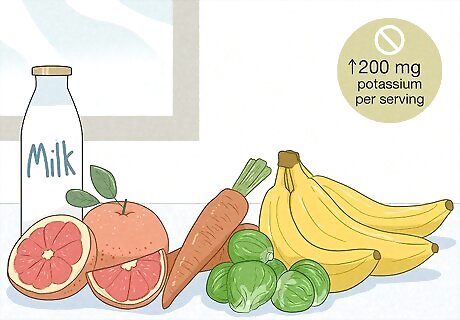
Limit or avoid foods with more than 200 mg of potassium per serving. Foods more than 200 mg of potassium are considered medium or high-potassium. You can have some medium-potassium foods as long as you’re careful to limit how much you eat. In general, cut out high-potassium foods entirely. Medium-potassium foods include asparagus, carrots, collard greens, Brussel sprouts, corn, cherries, grapefruit, pears, and oranges. High-potassium foods you should eat cautiously include avocados, bananas, dried fruits, artichokes, honeydew, potatoes, spinach, beets, bran, chocolate, granola, milk, and peanut butter. Check labels or the FDA Database for RDA percents.
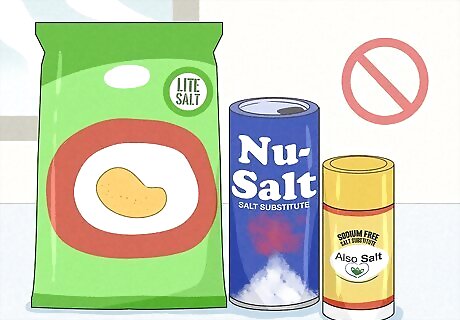
Avoid all salt-substitutes. Most salt substitutes are made from potassium chloride, so they’ll give you a very high potassium dose. Cut these products out of your diet entirely. Some brand names for salt substitutes are Nu-Salt, No Salt, MySALT, and Also Salt. If you aren't sure what a product is, check the label. If it says "salt substitute" or "lite/light salt" anywhere, then don't use it.
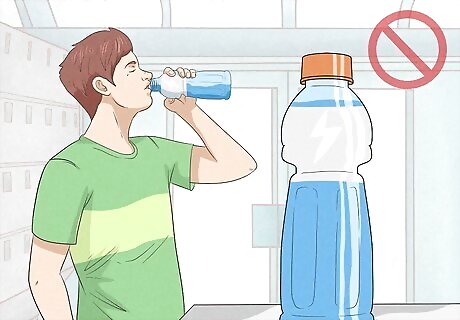
Cut sports drinks out of your diet. Sports drinks are specifically designed to give you high doses of electrolytes, including potassium. Cut these out of your diet entirely as well. Stick with plain water or seltzer instead.
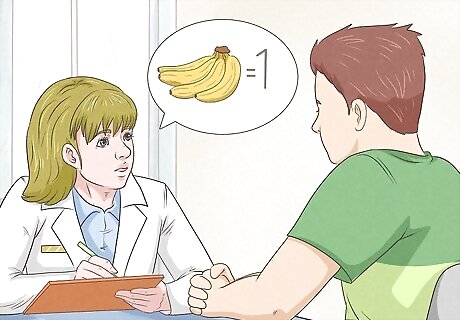
Consult a dietitian if you need more advice. Since so many foods contain different levels of potassium, sticking with a low-potassium diet can be confusing. If you don’t know where to start or have trouble sticking with your diet, then schedule an appointment with a dietitian. They can help you design and follow the best diet for your health. Ask your doctor for a referral to a dietitian if you need help finding one.
Tricks to Cut Out More Potassium

Drain the liquid from canned food and meats. The liquid from canned products and juice from meats all contain potassium that’s leaked out of the food. Reduce your overall potassium intake by draining liquid and juice from these foods before you eat them. If you use canned vegetables like beans, drain and rinse them to get rid of any excess potassium.
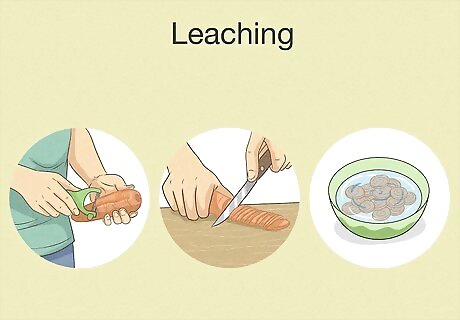
Leach vegetables to lower the potassium content. Leaching is a process that draws potassium out of high-potassium foods, particularly vegetables, so you can eat them. Start by washing and peeling the food. Slice it into ⁄8 in (0.32 cm) sections and rinse them off in warm water. Then soak them in warm water, using at least 10 times more water than food. Leave them for 2 hours, then rinse them off once more before cooking them. Leaching doesn’t take all of the potassium out of these foods, so watch your portion sizes so you don't eat too much. This works well with potatoes, beets, rutabagas, carrots, and squash.
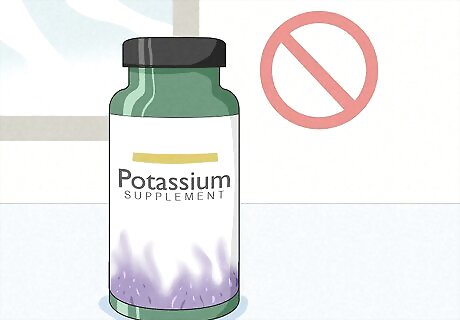
Avoid dietary supplements unless your doctor tells you to take them. Dietary and herbal supplements might have some potassium in them as an additive. It’s best to avoid these unless your doctor tells you to take them for your health.
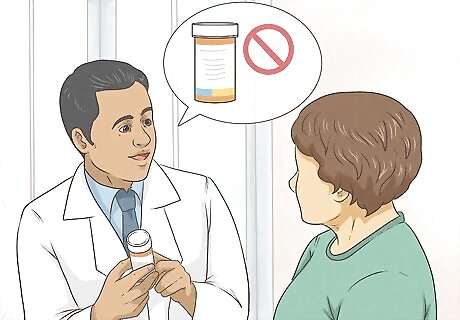
Stop taking medications with potassium if your doctor tells you to. Some pills or tablets could contain potassium as an additive as well. If you’re on a low-potassium diet and take medication regularly, ask your doctor if it contains potassium. If so, your doctor might be able to switch you to a different type. Never stop taking medications without your doctor telling you to. If you’re using OTC medications, try asking the staff pharmacist if they contain any potassium.
Medical Treatments

See your doctor right away if you experience hyperkalemia symptoms. The most common symptoms are muscle fatigue or weakness, nausea, vomiting, difficulty breathing, chest pains, and an erratic heartbeat. If you experience these symptoms, then it’s very important to have an exam right away. Even if you don’t have high potassium, these symptoms could be from a different health condition. See your doctor as soon as possible for an exam to rule everything out.
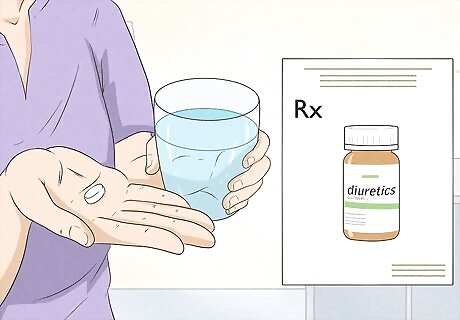
Flush potassium out of your system with diuretics for a minor case. Diuretics, sometimes called water pills, make you urinate more frequently. This can help flush potassium out of your system and lower your overall levels. If your doctor prescribes this medication, take it exactly as directed. Your doctor will also probably tell you to drink more water while you’re taking diuretics. This helps your kidneys excrete more potassium. Your doctor may also administer diuretics in IV form.
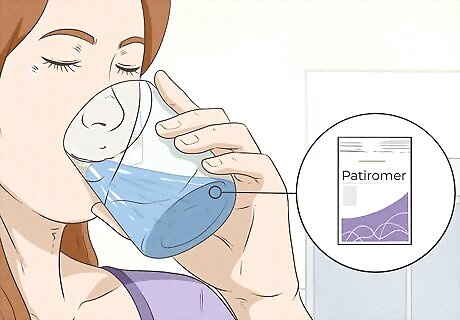
Take potassium binders to remove potassium if your doctor prescribes them. If you have a more serious case of hyperkalemia, your doctor will probably prescribe medication to help reduce the amount of potassium in your system. Potassium binders help flush the nutrient out of your body to prevent your levels from getting too high. Take them exactly as directed if your doctor prescribes this medication. Sodium zirconium cyclosilicate and patiromer are 2 common potassium binders. This medication usually comes on powder form. Mix a dosage into a glass of water and drink the whole thing as directed.
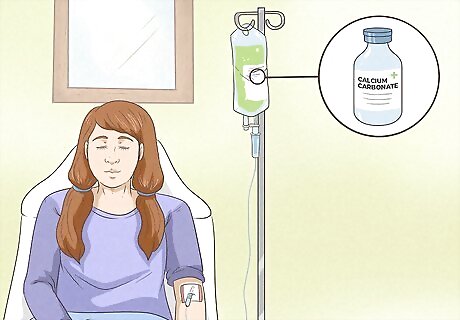
Have an IV treatment of calcium, glucose, or insulin for more severe cases. These 3 compounds can push potassium out of your system. Your doctor may choose this option if you need to flush the potassium out quickly, like if your hyperkalemia symptoms are severe. One of these compounds, or a combination, will be pumped into your blood through an IV. This should help your potassium levels return to normal. You’ll probably have to go to the hospital for this treatment. Your doctor will likely still instruct you to follow a low-potassium diet after this to make sure it doesn’t happen again.

















Comments
0 comment